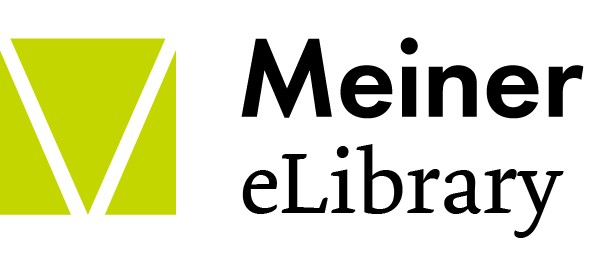ABSTRACTS
Raymond Bellour: Wie sehen?
Es ist die herausragende Eigenschaft der Werke von David Claerbout, sich an einem wesentlich ambivalenten Ort zwischen Kino und Fotographie zu situieren, und zwar mittels beider Praktiken, die – ob einzeln oder kombiniert – auf sehr eigene Weise zum Einsatz kommen. Die Reihe von Installationsprojektionen, welche von Sections of a Happy Moment (gefolgt von Arena und The Algiers’ Sections of a Happy Moment) ausgehend entworfen wird, treibt die Vermengung von Bewegung und Stillstand bis zum Extrem einer Unentscheidbarkeit, welche das Resultat der ein- gesetzten neuen Bildverarbeitungstechniken ist.
It is the outstanding characteristic of the works of David Claerbout to be situated in an essentially ambivalent place between cinema and photography. Both practices are used – either individually or in combination – in a very individual way. The series of projections of installations, which is mapped out from Sections of a Happy Moment onwards (followed by Arena and The Algiers’ Sections of a Happy Moment), drives the confusion of motion and rest to the extreme of an undecidability, which is the result of the new imaging techniques that Claerbout uses.
Eva Ehninger: Die Land Art als Film – Parallelen der Raumkonstruktion in Land Art und Film bei Walter De Maria und Robert Smithson
Parallel zu ihren monumentalen Außenrauminstallationen, die während der späten 1960er und frühen 1970er Jahre im Westen und Südwesten der USA realisiert wurden, haben einige Vertreter der amerikanischen Land Art auch Arbeiten im filmischen Medium produziert. Die Frage nach dem Stellenwert dieser Filmbeiträge für das jeweilige Œuvre ist in der Forschung ein Streitpunkt. Dieser Artikel bewertet weniger ihren Status als eigenständige Werke oder Dokumentationen, sondern widmet sich einem Thema, das Installationen und filmische Arbeiten gemein haben: die Kritik am klassischen Raumverständnis. Anhand zweier Werkgruppen der Künstler Walter De Maria und Robert Smithson wird die Neuverhandlung der konventionellen Regeln räumlicher Ordnung und perspektivischer Darstellung in beiden Medien diskutiert. Aus den Werkanalysen lässt sich ableiten, daß die filmischen Werke nicht lediglich die veränderte Raumwahrnehmung in den Land Art-Installationen abbilden, sondern eine vergleichbare Kritik am klassischen Raumverständnis mit filmspezifischen Mitteln vollziehen.
In parallel to their monumental installations, which were built in the Western and South- western deserts of the U.S. in the late 1960s and early 1970s, a number of representatives of American Land Art have also produced works on film. Researchers have held divergent views about the importance of these films for the understanding of the installations and about their character as either independent works or mere documentations. This article takes a different approach and analyses an element common to both installations and films: the critique of conventional constructions of illusionistic space. The repudiation of conventional spatial structures and of the representation of perspective is discussed on the basis of works by Walter De Maria and Robert Smithson. A formal analysis demonstrates that the films go beyond merely showing the conception of space in Land Art installations. Instead, they perform a similar critique of conventional ideas of space with decidedly cinematic techniques.
Vittorio Hösle: Poetische Poetiken in der Neuzeit – Boileau, Pope, Friedrich Schlegel und Adorno
Eine einzige der Spezialästhetiken, nämlich die Poetik, kann versuchen, mit der Kunst zu wetteifern, die sie thematisiert, indem sie selbst in poetisch schöner Form erklärt, was gute Dichtung ist, und damit die Normen instantiiert, die sie lehrt. Die klassische Weise, dies zu tun, ist das Lehrgedicht – sowohl Boileaus L’Art Poétique als auch Alexander Popes An Essay on Criticism werden als paradigmatische Beispiele des Genres des poetologischen Lehrgedichtes gedeutet. Nach dem Niedergang dieses Genres versucht Friedrich Schlegel das Fragment und den romantischen Dialog als neue Formen poetisch anspruchsvoller Literaturtheorie einzuführen. Adornos Ästhetische Theorie schließlich ist zwar ein Traktat, weist aber jene Dissonanz selbst auf, die ihm zufolge das Wesen moderner Kunst ausmacht. Damit freilich erweist sich Harmonie als auf der Metaebene unvermeidlich.
Of the special aesthetics dedicated to the single arts, only one can vie with the art that is its subject, namely poetics, which may explain in poetically beautiful form what is good poetry and thus instantiate the norms that it teaches. The classical way of doing so is the didactic poem. Both Boileau’s L’Art Poétique and Alexander Pope’s An Essay on Criticism are interpreted as paradigmatic examples of the genre of the poetological didactic poem. After the decline of this genre, Friedrich Schlegel tries to introduce the fragment and the romantic dialogue as new forms of a literary criticism that is itself poetically ambitious. Adorno’s Ästhetische Theorie finally is a treatise, which manifests itself the dissonance that, according to the theory, constitutes the essence of modern art. Thus, on the meta-level harmony proves inevitable.
Joachim Küpper: Kants Kritik der Urteilskraft und die Philosophie der Aufklärung
Der Aufsatz diskutiert die Frage nach der Relation von Kants ästhetischer Theorie zur Philosophie der Aufklärung anhand zweier zentraler Komplexe der Kritik der Urteilskraft: Zur Analytik des Erhabenen wird vertreten, daß sich aus Kants Argumenten heraus die Auffassung entwickeln konnte, die Erfahrung des (spezifisch modernen) Kunstschönen sei ein Vehikel, den Menschen mit einem Bewußtsein seiner selbst als rationalem Wesen auszustatten. Zum Komplex der ›ästhetischen Ideen‹ wird argumentiert, daß sich bei Kant der Gedanke von der Erfahrung des Kunstschönen als einer Kompensation des Rationalitätsdrucks der im 18. Jahrhundert einsetzenden Moderne entwickelt.
This paper seeks to examine the relation between Kant’s aesthetic theory and the philosophy of Enlightenment. My study will focus on two central aspects from the Critique of Judgment: In connection with the Analytic of the Sublime, I will argue that Kant’s discussion of the concept enabled the development of the opinion that experiencing the specifically modern artistic beauty works as a means to equip us with an awareness of ourselves as beings equipped with reason. The second aspect I want to discuss is that of the aesthetic ideas. I will show that in the Third Critique, the idea of experiencing artistic beauty functions as a compensation for the pressure of rationality that sets in together with modernity in the 18th century.
Katharina Münchberg: Der fliegende Pfeil – Paradigmen zu einer Poetik der Bewegung in der französischen Moderne
Die Kunst der Moderne, insbesondere die Lyrik, entwickelt eine eigene ästhetische Konzeption der Bewegung, die mit der klassischen Vorstellung der Bewegung als räumlicher Veränderung eines Körpers in der Zeit bricht. Baudelaires À une Passante, Rimbauds Bateauivre und Paul Valérys Le Cimetière marin sind drei paradigmatische Texte der französischen Moderne, in denen Bewegung als zeiträumliches Kontinuum reflektiert und in der Dynamik der Sprache materialisiert wird. Die moderne Kunst, so erweist sich, ist selbst Bewegung und stiftet Bewegung. Sie wird zu einer Kunst des Werdens, nicht der Substanz, zu einer Kunst der reinen sinnlichen Wahrnehmung, nicht des Begriffes, zu einer Kunst der diskontinuierlichen Erlebnisse, nicht der Erfahrung.
The art of the modern age, particularly the lyric poetry, develops an own aesthetic conception of the movement which breaks with the classic idea of the movement as a spatial change of a body in time. Baudelaires À une Passante, Rimbauds Bateau ivre and Paul Valérys Le Cimetière Marin are three paradigmatic texts of the French modern age, in which movement is reflected as a time-space-continuum and materialized in the dynamic of language. Modern art is itself movement and causes movement. It becomes an art of the development, not sub- stance, an art of pure sensory perception, not concept, an art of discontinuous adventures, not experience.
Jochen Schuff: Wittgenstein verabscheut Wittgenstein und schaut sich Annie Get Your Gun an
Philosophie und Film stehen in einem spannungsvollen Verhältnis. Ziel des Artikels ist, diese Spannungen offen zu legen und ihnen auf den Grund zu gehen. Der Philosoph und Filmzuschauer Wittgenstein dient dabei als leitmotivische Figur der Diskussion. In den Linien, die von diesem Motiv ausgehen, zeigt sich die philosophische Unverfügbarkeit des Films. Um zu verstehen, was wir mit Film meinen und tun, ist eine spezifisch ästhetische Herangehensweise unabdingbar. Das bedeutet insbesondere, Film innerhalb der Praxis der Kunst zu verstehen. Ansätze zu einer solchen Sicht präsentiert der Autor abschließend in kurzen begrifflichen Reflexionen zum Film.
The relation between film and philosophy is a relation marked by tensions. The article’s aim is to unfold these tensions and to fathom them out. The figure of Wittgenstein as a philosopher and film spectator serves as a leitmotif throughout the course of the argument. Following the lines based in this motif, the philosophical unavailability of film becomes apparent. In order to understand what we mean by film and do with films, a specific aesthetic perspective is essential. This means, in particular, that film is to be understood within the practice of art. Eventually the author presents approaches to such a view in short conceptual reflections.
Ralf Simon: Was ist: »Bildkritische Literaturwissenschaft«?
Während die Studien zur literarischen Intermedialität eine offenkundige Konjunktur verzeichnen, bleibt die poetologische Kernfrage, wie die Bildlichkeit des poetischen Textes zu denken sei, weitgehend unbedacht. Der vorliegende Aufsatz entwirft ein Forschungsprogramm, welches die Frage nach dem Bild unter den Bedingungen der poetischen Textualität aufsucht. Dabei wird ein Bildbegriff, der sich von dem Dispositiv der Sichtbarkeit löst, entworfen und einer Texttheorie eingelesen, die ihren Ausgang bei Roman Jakobson nimmt. Der poetische Text wird als ein Zugleich von ikonischer Poiesis und bildkritischer Textualität bestimmt.
While studies on literary intermediality are evidently experiencing an upward trend, the poetological key question of how to understand the iconicity of the poetic text, remains mostly unthought. The present study draws up a research program that investigates the question of the image under the conditions of poetic textuality. It thereby creates a notion of the image which disengages itself from the discursive formation of visibility and which is incorporated in a theory of the text beginning with Roman Jakobson. The poetic text is determined as a composite of both iconic poiesis and iconic criticism (Bildkritik).















